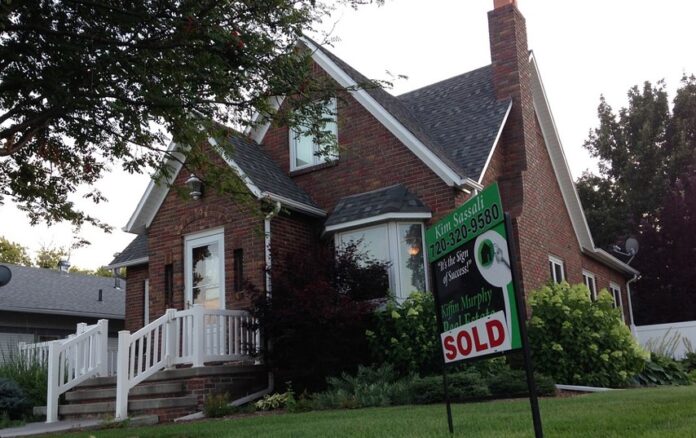Your real estate signs convey more than just property information; they reflect your business and its values. Regardless of whether you specialize in residential or commercial properties, your signs act as representatives of your brand, speaking on your behalf when you’re not present. While signage isn’t as critical as your real estate company’s logo, it serves a crucial function. Therefore, it’s essential to take control of the message your signs convey and not leave it to chance.
Out-of-Home (OOH) Advertising encompasses most conventional real estate signs such as “For Sale” signs, open house signs, bench ads, and billboards. To promote your brand and engage with potential clients, it’s important to create distinctive and personalized real estate signs that stand out.
If you’re considering different real estate sign styles, here’s an overview of some popular options:
- Colonial Post: This type of sign features a sturdy, wooden inverted L-shaped frame with a sign hanging from it. It’s perfect for marking residential homes for sale.
- Frame: Frame-style signs are made of sturdy metal frames that enclose a sign. The signs are available in Standard size with one sign, as well as Single or Double Rider sizes that include one or two smaller signs, also known as “riders.” These signs are another excellent option for lawn “For Sale” signs.
- A-Frame: A-Frame signs, also known as “sandwich board” signs, are portable and are effective for attracting attention to open houses or other events. However, be cautious as these easily mobile signs can go missing if left unattended.
- H-Frame Stake: This lightweight H-shaped wireframe is ideal for temporary signage, such as “Open House” signs. The frame’s legs (stakes) stick into the ground, making it easy to set up and remove.
- Feather Flag: This sign is made up of a tall, flexible frame attached to a narrow fabric flag. One side of the fabric is loose, which allows it to flutter in the air, making it a visually captivating option.
- Vinyl Window Cling: These non-adhesive films cling to the window glass and are ideal for commercial properties with large plate-glass windows.
Sign Design Considerations According to ShieldCo Custom Work
Each of these real estate signage options provides different dimensions and mediums for printing. The amount of available space and its shape will directly impact your sign’s design layout. For this reason, you need to decide on the type of sign before you begin designing its content or graphics.
Before diving into design specifics, there’s one last logistical consideration to ponder: brushing up on signage laws in your area. Many towns, cities, and residential developments have specific ordinances or rules regarding the types of signs allowed, how many can be used, and where they can be placed. Understanding the permissible signage in your region will help guide you as you choose your next signs.
Let’s explore some key considerations in sign design outlined by ShieldCo Custom Work.
Branding

Real estate signs provide a great opportunity for out-of-home advertising and can effectively increase brand awareness. It’s crucial to include your company’s logo on your sign; otherwise, it loses its brand awareness potential.
Ensure that your logo, the most valuable visual branding tool, is prominently featured on your sign. In addition, using your brand colors on your signage can help establish a consistent visual presence, making it easier for potential clients to recognize your business. Consistency in your visual branding across all signage will foster familiarity and trust between your business and your audience, leading to more clients.
While most passersby may not be actively seeking to buy or lease at the time, a consistent visual presence can plant a seed in their minds. So when they eventually require real estate services, they are more likely to remember your business.
Readability

When designing a sign, it’s crucial to prioritize readability over aesthetics and brand awareness. After all, the primary purpose of a sign is to communicate a message clearly and effectively.
Choosing a font that is easy to read is essential in achieving this goal. The font should be large enough to be seen from a distance and should have a simple, clean design that is easy on the eyes.
It’s recommended to steer clear of elaborate or ornamental fonts that can be challenging to read. Instead, opt for straightforward sans-serif fonts such as Arial or Helvetica. And make sure the font color contrasts with the background color for maximum legibility.
Additionally, consider the spacing between letters and words. Aim for a balanced and consistent spacing throughout the sign.
By prioritizing readability in your signage design, you’ll ensure that your message is conveyed clearly and effectively to your target audience.
White Spaces

White space is the empty area in a design that is devoid of color, lines, shapes, or text. While it may seem unimportant, white space plays a crucial role in both the aesthetics and readability of a design.
From an aesthetic standpoint, sufficient white space provides a design with a sense of ease and breathability. Filling a design with too much text or graphic elements creates visual tension, which is not ideal for conveying a positive image for your business.
In terms of readability, excessive copy on a sign can make it difficult for your audience to quickly and easily understand your message. By being concise and clear about who you are and what you do, you can prioritize white space and create a sign that exudes confidence and peace of mind.
Furthermore, it’s essential to brand your business with a strong, unique logo that sets you apart from the competition. By following the example of companies with famous logos, you can highlight what makes your business different and stand out in the real estate industry, whether you’re a realtor, real estate company, mortgage company, or any other type of business. Paying attention to these design considerations is crucial for success in the industry.
Conclusion

Real estate signs are an important marketing tool that reflects your brand’s values and serves as a representative when you’re not present. Creating distinctive and personalized signs can help promote your brand and engage potential clients. However, it’s essential to choose the right type of sign that fits your needs and abide by local signage laws.









